“During the pandemic lockdowns, the email jobs caste [meaning remote workers] loved to talk about essential workers,” observes Marxist writer Malcom Kyeyune, but they now regard those workers with “outright hatred.” His fellow leftists claim to speak for the working class, charges Kyeyune, but in fact the leftist movement and the working-class movement have “divorced.”
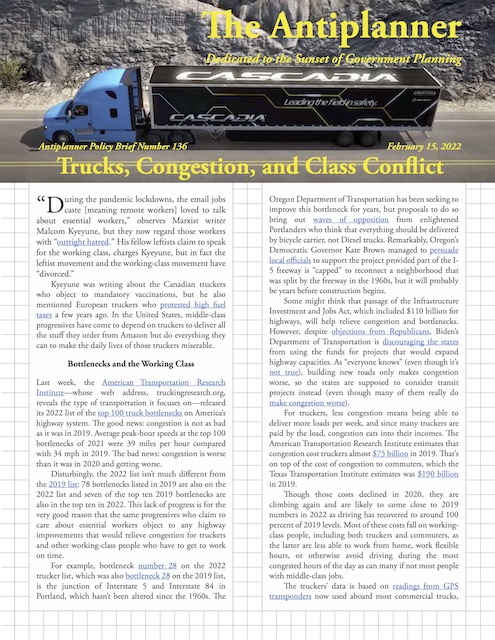 Click image to download a four-page PDF of this policy brief.
Click image to download a four-page PDF of this policy brief.
Kyeyune was writing about the Canadian truckers who object to mandatory vaccinations, but he also mentioned European truckers who protested high fuel taxes a few years ago. In the United States, middle-class progressives have come to depend on truckers to deliver all the stuff they order from Amazon but do everything they can to make the daily lives of those truckers miserable.
Bottlenecks and the Working Class
Last week, the American Transportation Research Institute—whose web address, truckingresearch.org, reveals the type of transportation it focuses on—released its 2022 list of the top 100 truck bottlenecks on America’s highway system. The good news: congestion is not as bad as it was in 2019. Average peak-hour speeds at the top 100 bottlenecks of 2021 were 39 miles per hour compared with 34 mph in 2019. The bad news: congestion is worse than it was in 2020 and getting worse.
Disturbingly, the 2022 list isn’t much different from the 2019 list: 78 bottlenecks listed in 2019 are also on the 2022 list and seven of the top ten 2019 bottlenecks are also in the top ten in 2022. This lack of progress is for the very good reason that the same progressives who claim to care about essential workers object to any highway improvements that would relieve congestion for truckers and other working-class people who have to get to work on time.
For example, bottleneck number 28 on the 2022 trucker list, which was also bottleneck 28 on the 2019 list, is the junction of Interstate 5 and Interstate 84 in Portland, which hasn’t been altered since the 1960s. The Oregon Department of Transportation has been seeking to improve this bottleneck for years, but proposals to do so bring out waves of opposition from enlightened Portlanders who think that everything should be delivered by bicycle carrier, not Diesel trucks. Remarkably, Oregon’s Democratic Governor Kate Brown managed to persuade local officials to support the project provided part of the I-5 freeway is “capped” to reconnect a neighborhood that was split by the freeway in the 1960s, but it will probably be years before construction begins.
Some might think that passage of the Infrastructure Investment and Jobs Act, which included $110 billion for highways, will help relieve congestion and bottlenecks. However, despite objections from Republicans, Biden’s Department of Transportation is discouraging the states from using the funds for projects that would expand highway capacities. As “everyone knows” (even though it’s not true), building new roads only makes congestion worse, so the states are supposed to consider transit projects instead (even though many of them really do make congestion worse).
For truckers, less congestion means being able to deliver more loads per week, and since many truckers are paid by the load, congestion eats into their incomes. The American Transportation Research Institute estimates that congestion cost truckers almost $75 billion in 2019. That’s on top of the cost of congestion to commuters, which the Texas Transportation Institute estimates was $190 billion in 2019.
Though those costs declined in 2020, they are climbing again and are likely to come close to 2019 numbers in 2022 as driving has recovered to around 100 percent of 2019 levels. Most of these costs fall on working-class people, including both truckers and commuters, as the latter are less able to work from home, work flexible hours, or otherwise avoid driving during the most congested hours of the day as can many if not most people with middle-class jobs.
The truckers’ data is based on readings from GPS transponders now used aboard most commercial trucks, and not surprisingly it shows that 2021 congestion often mirrored 2019 congestion, though usually at slightly higher speeds. In the worst cases, there is sometimes almost no difference between the two.
For example, bottleneck 1 in both 2019 and 2022 is the New Jersey approach to the George Washington Bridge into Manhattan. Traffic there is so heavy that it is never free flowing (which for truckers is 55 miles per hour) and instead reached a maximum of 45 mph in 2019. Speeds in 2021 were almost exactly the same, and in fact were a little worse during the afternoon rush hour.
The average speed charts developed by ATRI for the New Jersey side of the George Washington Bridge are nearly indistinguishable; this one for 2022 shows slightly slower speeds at 6-7 pm.
The Effects of Telecommuting
Changes are more visible lower down on the list. Bottleneck 33 in 2022 was bottleneck 29 in 2019: the Columbia River bridge between Portland and Vancouver. The states of Oregon and Washington spent well over $100 million planning a new bridge, but Oregon insisted on significantly adding to the cost by including a light-rail line into Vancouver. That plan was killed by the Washington legislature, but it is being revived again.
Compared with the previous 2019 chart, the 2021 chart shows the morning rush hour to be relatively mild.
According to the truckers’ data, in 2019 speeds on the bridge slowed to 30 mph in the morning rush hour, but only 35 mph in the afternoon. Thanks to people working at home in 2021, speeds still dropped to 35 in the afternoon but only slowed to 45 mph in the morning. In fact, speeds at 8 am were only slightly slower than at 10 am. According to Inrix, this congestion pattern—much less in the morning but nearly as much in the afternoon—is likely to be typical after the pandemic, as people working at home won’t be on the road during the morning rush hour, but may do errands in the afternoons.
The speed chart for I-75 in this Atlanta suburb shows no morning rush hour at all but a pretty serious one in the afternoon. All four charts courtesy of the American Transportation Research Institute.
The best example of this might be I-75 in McDonough, Georgia, which was bottleneck 12 on the 2022 list but wasn’t even listed in 2019. According to the truckers’ data, the highway enjoys free-flowing traffic all morning, but starting at noon begins to dip to as low as 35 mph, not fully recovering until after 9 pm.
The problem with congestion relief is not that it “induces” new traffic but that traffic that had been repressed by congestion returns to use the new roads. Repressed traffic includes people who drove at different times of the day, took alternate routes, or resorted to using transit instead of autos to get to work. Transportation economist Anthony Downs called this the triple convergence as people from these other three patterns converged on the improved roads. But even if the roads appear to get more congested, the increased capacity means more people are reaching their important destinations in less time than they were taking before.
Triple convergence will apply to increased telecommuting as well as to new road capacity. The Census Bureau’s 2020 American Community Survey data showed that the increase in the number of people working at home took a much bigger bite out of transit commuting than it did driving to work. As the number of people working at home increased by 165 percent to 15.8 percent of workers, the number of people driving to work declined by 13 percent, but the number taking transit fell by 38 percent.
Some of that difference may be due to the fact that, nationally, people taking transit had higher incomes than people driving in 2019, and so were more likely to work at home. But this trend was also found in states such as Minnesota, where the incomes of transit commuters were lower than those of people who drove to work. In that state, telecommuting grew by 195 percent while driving fell by 17 percent and transit commuting fell by 41 percent.
It seems likely that at least some of the reason for transit’s greater decline was that many transit commuters, seeing the roads were less congested, switched to driving instead. This means, as I suggested early in the pandemic, that transit will be doubly hit by increased telecommuting: first by telecommuters who were formerly transit riders and second by transit commuters who switch to driving to take advantage of the reduced congestion.
As triple convergence works its way out, afternoon congestion is likely to become as bad as it was in 2019, but mornings should be better simply because people working at home probably aren’t going to do a lot of driving in the early mornings.
The American Community Survey data are for the entire 2020 year; the increase in telecommuting and consequent declines in commuting were in the last nine or ten months of the year and would have been larger during those nine months. Wendell Cox estimates that working at home grew from 6.0 percent in January and February to 18.7 percent over the rest of the year.
A paper published by the National Bureau of Economic Research calculates that, on any given workday, 20 percent of people will be working at home after the pandemic, or close to four times what it was before. This is more than Cox’s estimate for 2020, but even if only 18 percent remain at home, that’s still more than triple the 2019 numbers.
Cox also estimated that transit commuting declined from 5.0 percent in 2019 to 3.0 percent after the pandemic began, a 40 percent drop. Total transit ridership in the twelve months after the pandemic began was only 30 percent of 2019, suggesting that people who used transit for purposes other than commuting to work abandoned it even more than commuters. While many of those people will return, continuing worries about infectious diseases will keep some of them away permanently.
Telecommuting and Income Inequality
Perhaps the biggest problem with increased telecommuting is not what it will do to the transit industry, which was obsolete anyway, but that it is likely to exacerbate the class divide described by Kyeyune. According to the American Community Survey, only 35 percent of American workers over the age of 25 had a bachelor’s degree or better in 2019.
These are the people most likely to be working at home at least parttime after the pandemic, and as such they will be less concerned about congestion than the 65 percent of working-class employees who mostly have to commute during fixed hours. Yet the 35 percent, even though in the minority, have a lot more political power and will be most likely to object to projects that could relieve congestion, whether that means fixing bottlenecks or even just coordinating traffic signals.
Most middle-class people don’t shop at Walmart and, if they had anything to say about it, working-class people wouldn’t be able to shop there either. Portland, for example, has created barriers to prevent Walmart from building stores in the city limits. Photo by Walmart.
With higher incomes and more job flexibility, the 35 percent will also have more choices about where they live, which will reduce their concerns about housing affordability. When members of the working class complain about traffic congestion, high housing prices, poor public schools, or other issues that affect them more than the middle class, they will be even more likely to be dismissed as racists or other “deplorables.”
In the 1960s, housing was affordable everywhere in the country, congestion was trivial compared with today, and public schools taught reading, writing, and math rather than critical race theory and climate change. In that decade, America’s income inequality was the lowest in its history and the working class and middle class together seemed to merge into a category called middle income.
“Congestion is your friend,” some urban planners say, meaning it is a friend to those who want to force other people to stop driving. But is isn’t a friend to truckers or to working-class people who have to get to work or pick up their kids at daycare on time. Photo by DaModernDaVinci.
In the 1960s, working-class and middle-class families lived in the same neighborhoods; drove similar cars; ate similar foods,; and got their information from the same newspapers, magazines, and television networks. Today, they live in different neighborhoods if not entirely different cities; working-class people are more likely to drive pickups while middle-class people are more likely to drive Priuses or Teslas; eat in entirely different restaurants; and, of course, get their information from wildly conflicting news sources.
Everything the middle class has supported since the 1960s, from urban-growth boundaries to light rail, has been aimed at making life better for the middle class while making it worse for the working class. The result has been a huge increase in income inequality. Those who want to blame income inequality on capitalism are ignoring this important lesson in history, and the problem won’t be fixed until we undo the government actions that made inequality worse.

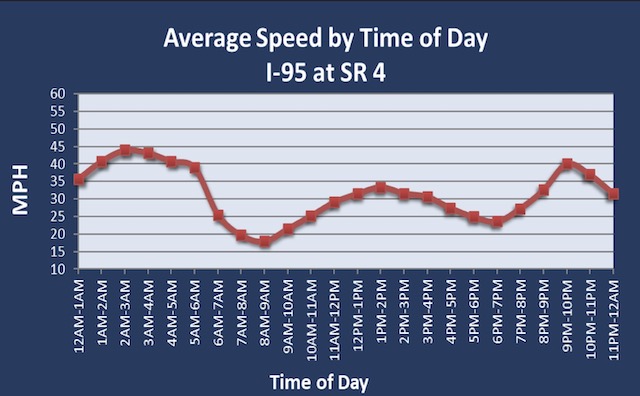
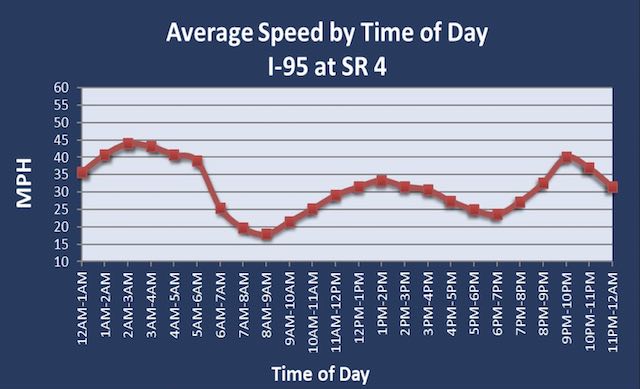
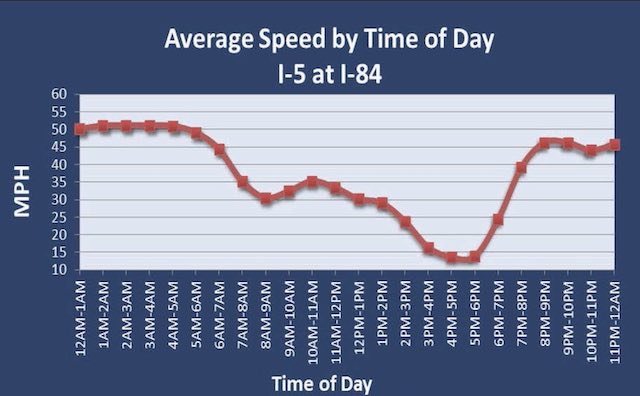
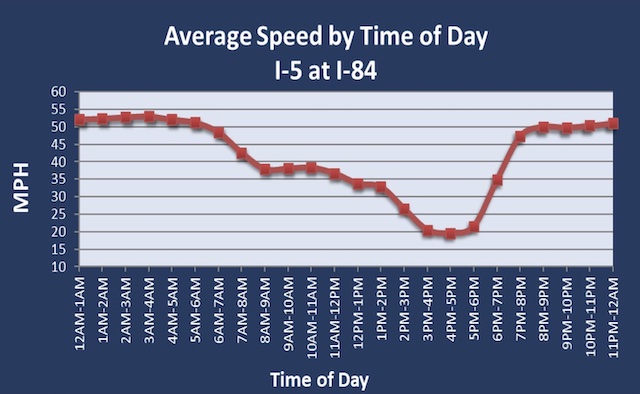
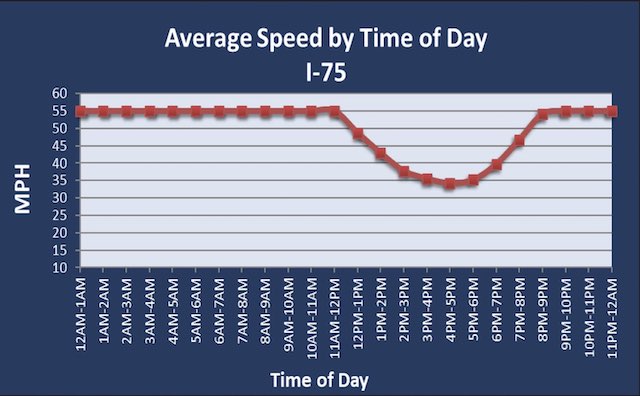
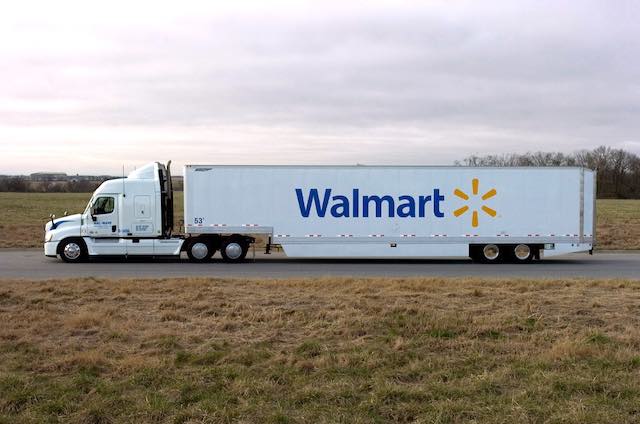
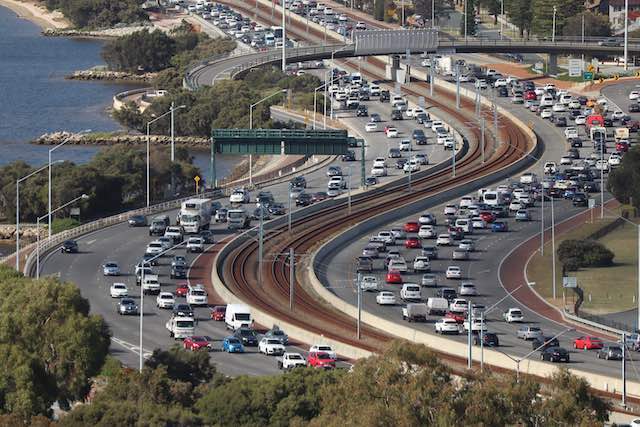







For decades the political left hoisted the Marxist rhetoric of galvanizing the working class to revolt against govt establishment. Now raises a shitt fit when working class people actually rise up and defy govt authority.
Truckers raised 10 million in contribution funds and was withheld….. BLM raised billions, still ransacked and looted major US cities and burnt them to the ground……….
White privelage? More like selective outrage
So now you are trying to exploit the working class to defend…
(1) environmental destruction with energy intense transportation and increased urban footprints
(2) bad urban design that makes people depend on cars for transportation
The American “left” has done little to build places with infrastructure like in Europe. In Vienna and Berlin middle class and working class live in the same neighborhoods. But they don’t in Seattle and Portland. And you want to tell us, that Portland and Seattle are more leftist than Berlin and Vienna? The American left is a softer version of the Republican party, slow in progress and vastly corrupted by wealthy interest groups.
Well designed eco friendly cities and a thriving working class are not mutual exclusive. Remember in Germany where Social Democratic policies rule, workers have 30 days paid leave holidays. In the US it is ZERO. Now you want to tell me, the left doesn’t care about the working class?
The American working class would be way better off with leftist policies that provide affordable housing, good working conditions, as well as walkable and eco friendly cities that provide a future for future working class children.
Here some facts to show how leftist in the US compare internationally:
“Vienna: Perhaps the most notable (or perhaps just the most important, in my view), is Vienna, having been led by the SPOe (the Social Democratic Party of Vienna) almost continuously since the election of Jakob Reumann in 1919. Reumann won on a platform of building up community through healthcare, strong municipal services, abundant municipal housing and other progressive policies. The Social Democratic Party was banned under the Austrofascists in 1934, as well as under the Nazis. However, since 1945, every mayor has been a member of the SPOe. Today, nearly two-thirds of the city live in social housing, and the city is routinely rated one of the most livable cities in the world. I’m sure there is no correlation.
Copenhagen: Every mayor since 1938 has been a member of the Socialdemokratiet –the social democratic party of Denmark. Is this, perhaps, the secret to Copenhagen’s cycling and livability successes?
Brussels: Since 1983, all mayors save for one have been center-left or socialist. The current mayor, Philippe Close, is a member of the Parti Socialiste (PS)–the social democratic party of Belgium. The city is governed by both PS and the Belgian green party, who have been working on making a more livable city for years.
Berlin: Berlin’s history is unique given partitioning during cold war, and reunification. During partitioned Berlin, East Berlin’s mayors were all members of various socialist and social democratic parties. However, West Berlin’s mayors also largely hailed from the Sozialdemokratische Partei Deutschlands (SPD)–the social democratic party of Germany–holding the mayor’s office for 32 of 42 years during partitioned Berlin. Post-reunification, the mayor has been a member of SPD for the last 20 years. The council as well is largely dominated by left parties, including B’90/Die Grünen, SPD, and die Linke.
Amsterdam: Since 1957, the mayor’s office has largely been held by members of Partij van de Arbeid (PvdA)–the social democratic party of the Netherlands. The longest-serving conservative mayor was a little over seven months. The current mayor of Amsterdam is a member of Groenlinks, a socialist-leaning green party. Like Copenhagen, the city is incredibly bikeable, walkable, and has a high quality of life.
Oslo: Oslo’s mayors have oscillated largely between the Norwegian Labour and conservative parties. The current Mayor, Marianne Borgen, is a member of Sosialistisk Venstreparti (SV), the democratic socialist party in Norway. However, even Oslo’s recent conservative mayors have been socially liberal, seemingly more than most American Democratic mayors, pushing very progressive policies on removing cars from the city and building up a safe bike network.
Barcelona: Nearly all of the mayors elected post-Franco have been members of the Partit dels Socialistes de Catalunya (PSC),the Socialist Party of Catalonia. Barcelona’s current mayor, Ada Colau, heads Barcelona en Comú, a coalition from the merger of several grassroots organizations focusing on anti-austerity, eco-socialism, and green policies. Colau has also pushed for policies to make the city more affordable and livable, as well as pushing ahead on climate action.
Munich: Munich’s mayors have all been members of SPD since 1948, save for a six-year stint with the conservative CSU (it should be noted that the CSU, the party led by Angele Merkel, is significantly more liberal than the American Republican Party). The Stadtrat (city council) has also been dominated by SPD for decades, and now has left-wing and center-left parties (SPD, B90/Die Grünen, and die Linke) holding 47 of 80 seats. Unsurprisingly, the city has spent years developing car-light ecodistricts, removing cars from the city to expand the stunningly massive pedestrian zone, and increasing the biking network. It is definitely one of my favorite cities, and I enjoyed living a short train ride away.
Lisbon: Since 1977, every mayor has been a member of Partido Social Democrata (PSD), the social democratic party, or Partido Socialista (PS), the socialist party. The current mayor, Fernando Medina, is a member of PS.
Zurich: Since 1928, The mayor’s office and the council have been dominated by centre-left and left-wing parties, largely the Social Democratic Party of Switzerland, and the Swiss Socialist Party (SP). Ninety percent of the Stadtrat is composed of left-leaning parties, and the Gemeinderat is also largely composed of left-leaning green and social democratic parties. Current Mayor Corine Mauch is a member of SP and has been in office since 2009. Zurich, like Vienna, is also a routine contender for most livable city with incredibly progressive and green housing policies, strong transit, amazing parking policies (a parking cap!), and an ever growing pedestrian zone.
Other major cities with left-wing or center-left mayors/councils include:
London — Mayor Sadiq Khan (Labour Party);
Rotterdam — Mayor Ahmed Aboutaleb (PvdA);
Utrecht – Mayor Peter den Oudsten (PvdA) ;
Bucharest — Gabriel Firea (Social Democratic party);
Reykjavik — Dagur Eggertsson (Social Democratic Alliance);
Bern — Alec von Graffenried (Green Party of Switzerland);
Basel — Council dominated by the Socialist and Green Parties of Switzerland;
63% of German cities over 100k have SPD or B’90/die Gruene mayors; and
In addition, (literally) thousands of other cities.
[…]
Nearly every one of the cities listed above has, and have had, far more left-wing electeds than any major American city. They are passing and promoting policies that uplift community, and the well-being of its citizens–along with the planet. Their policies are proving quite popular, and mayors and councilpersons are finding success in leading on ecological measures. Another commonality among these cities? Virtually none of them have single-family zoning, and most are built up to the point nearly everything one needs can be visited or obtained by walking, biking, or frequent transit.”
https://www.theurbanist.org/2020/08/21/u-s-city-governments-seattle-included-not-as-left-as-reputation/
The 241 mile-long Ohio Turnpike was built (between 1949 and 1955) and is maintained solely from tolls. As usage increased it was expanded from two to three lanes in each direction — paid for from toll revenue.
In my experience, it is the best highway in the USA. Smooth and fast, summer and winter.
https://en.wikipedia.org/wiki/Ohio_Turnpike
Leftist coverage of the trucker protests in Canada (and across the world) has been abysmal. You know that when effete wannabe dictators like Trudeau pull the “white supremacist” card that they got nothing and their days are numbered. Sharpen the guillotines! Better yet, leave them dull.
People have had enough, and what was clear to me and others is now becoming clear to the entire world: the lockdowns did nearly nothing to prevent COVID deaths and likely raised mortality for other causes.
All this for something that for most people is like the flu.
Sure you have to know it Mister “I did my own research” scientist. You have nothing but a questionable concept of deontological moralism.
Oh, and the “vaccines” are not vaccines; at best they are a therapeutic that must be taken in advance of illness. Mandates are evil.
Honk!!!
Sure LOL
”
This means, as I suggested early in the pandemic, that transit will be doubly hit by increased telecommuting: first by telecommuters who were formerly transit riders and second by transit commuters who switch to driving to take advantage of the reduced congestion.
” ~Anti-planner
When you’re only going into the office twice a week, a little traffic + spending for parking downtown is still faster and cheaper than taking transit.
The Democratic party maintained control of House of Representatives from 1955-1995. Some DNC representatives have been in office that long. For forty years, they all but crafted our nations tax code, but have the audacity to complain about “The rich not paying their fair share” when they crafted all the loopholes and minutiae that allows them to avoid.
Democrats aren’t leftists. The US is a plutocracy run by billionaires and their interest groups. This applies to both parties, but even more so to the Republican Party.
Blah blah blah everywhere sucks but Europe. But when given a choice real people move from there to the US 3x more than the other way. Blah blah blah single family zoning sucks. But when given a choice real people bolt from the city as soon as working remotely becomes an option. As the Antiplanner said with better words, blah blah blah truckers are heroes when we can’t get our avocado toast, then the fraud socialists turn on them when they don’t step in line and show their papers. Actions speak louder than words.
“But when given a choice real people move from there to the US 3x more than the other way.”
The trend has slowed down and reversed in some cases. Europe has caught up to the US in terms of quality of life. Now if adjusted for working time, many European countries like Germany and Switzerland have achieved a standard of living that is more or less equal with the US, but on top of that they have great cities, superior infrastructure and a generous welfare state. The introduction of the welfare state alone has decreased emigration to the US by a lot. You can observe this fact, if you look at emigration numbers from Europe to the US in the past 150 years and you will see, that it drastically declined after the introduction of the welfare state in Europe. The vast resources the North American continent provided has made the US a rich country in the first place. Now that resources have become a globally traded commodity, Europe has caught up to the United States. If you look at the disposable household income including social transfers per capita and divide it by the number of hours worked per capita you get a higher income per hour worked in Germany and Switzerland than in the United States. In a world where people shift their preferences from income to leisure this is an especially strong effect. We are observing an increase of Americans who coming to Germany for living and studying for years now. This isn’t 1880 anymore.
“But when given a choice real people bolt from the city as soon as working remotely becomes an option.”
Actually if you look at the numbers, downtowns have grown the fastest. The Chicago Loop has outperformed any Chicago suburb in terms of population growth in the last decade. People are flocking to compact neighborhoods. Keep in mind, cities aren’t cities and suburbs aren’t suburbs anymore. Many cities consist mostly of suburban housing and some suburbs are turning themselves into city like denser places.
“Truckers are heroes when we can’t get our avocado toast, then the fraud socialists turn on them when they don’t step in line and show their papers.”
The vast majority of Canadian truckers did not participate in the protest and is vaccinated.
Our new troll has plagued the Mises Institute comment section for years under names like Volkstribun. Presents itself as a German nationalist. A moderator there told me the IP address was Russian. Can’t really trust anything it types.
Best to ignore this troll.